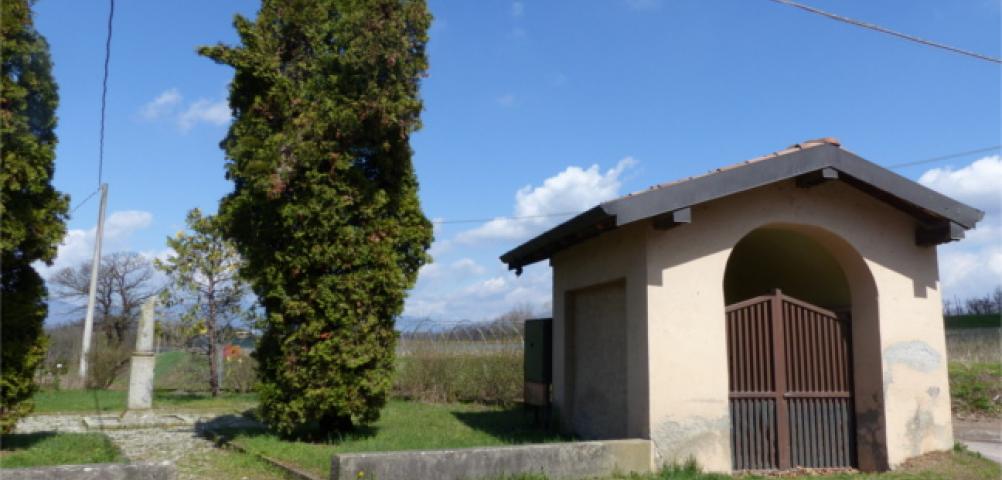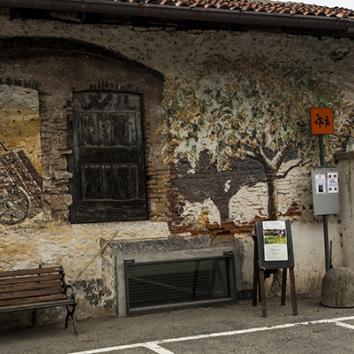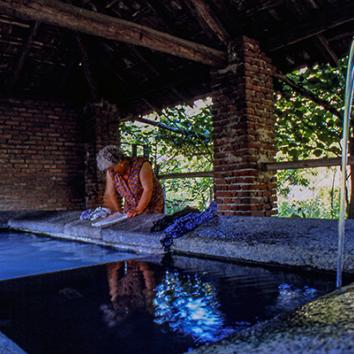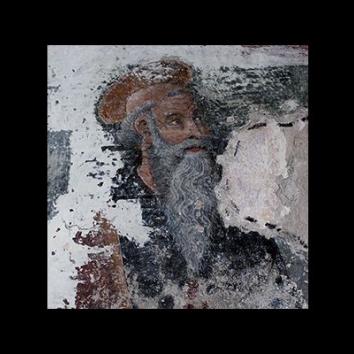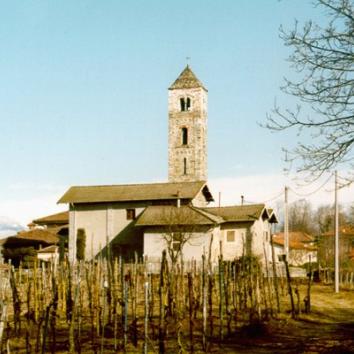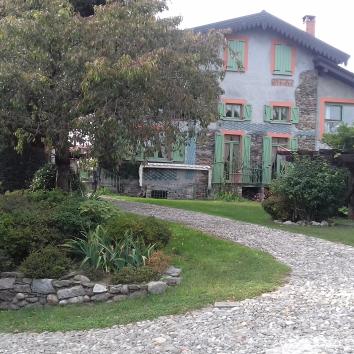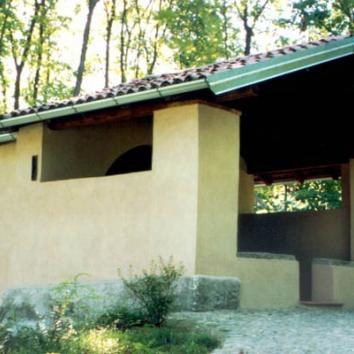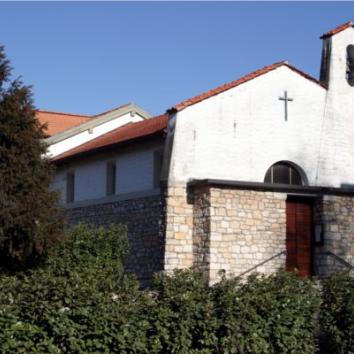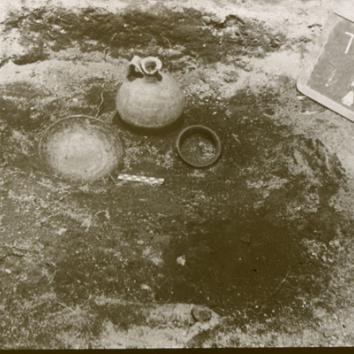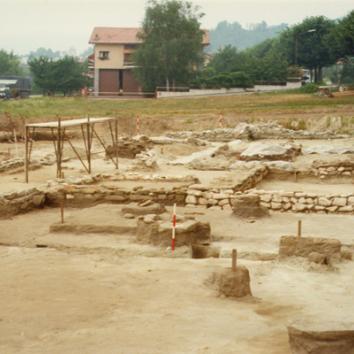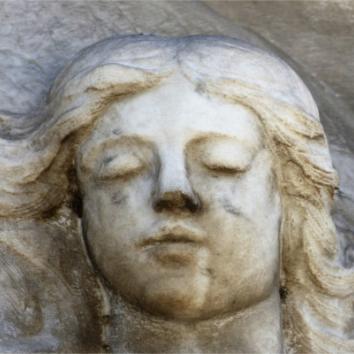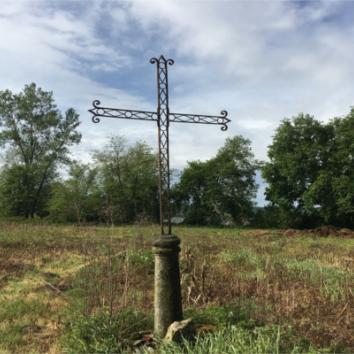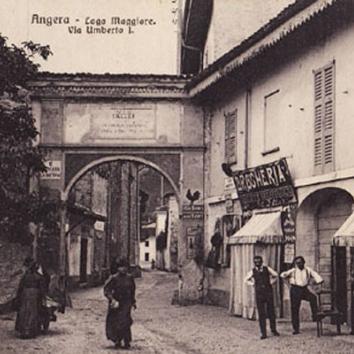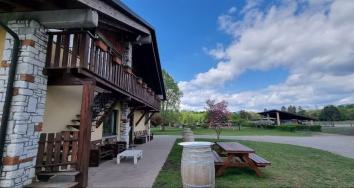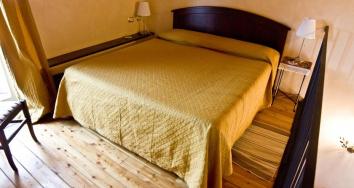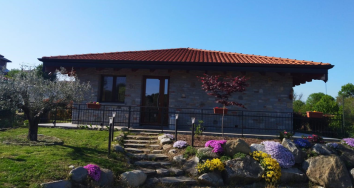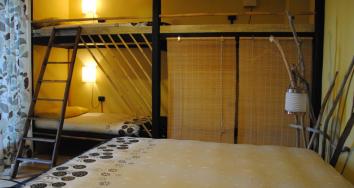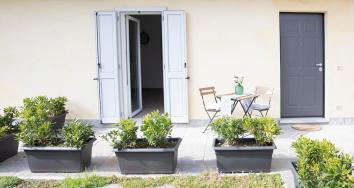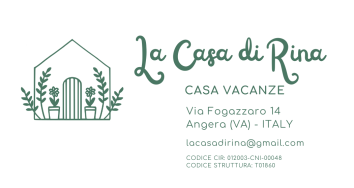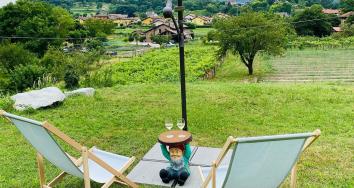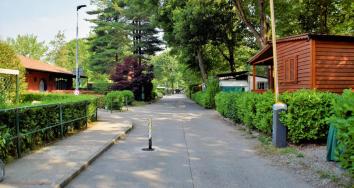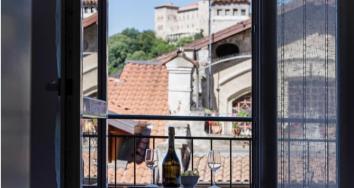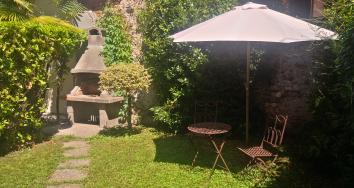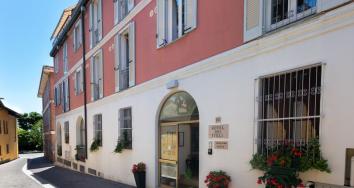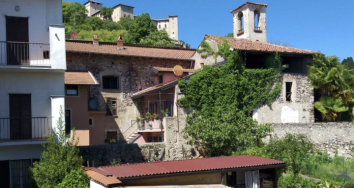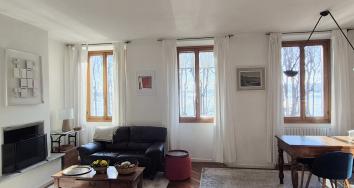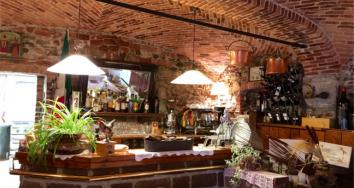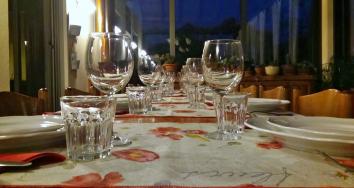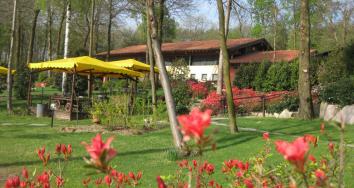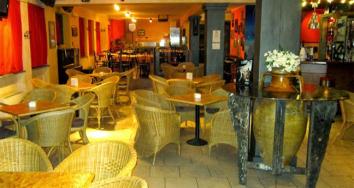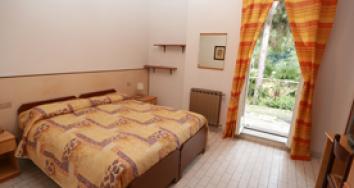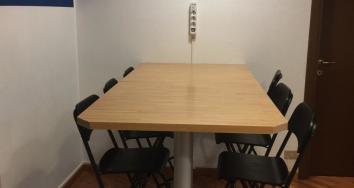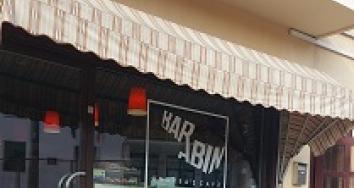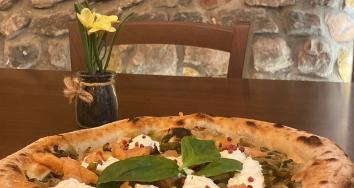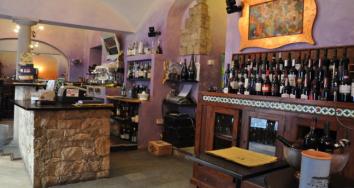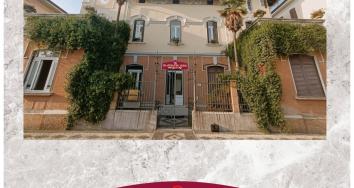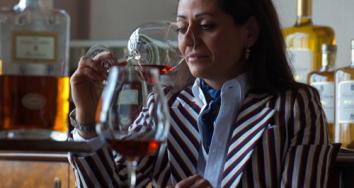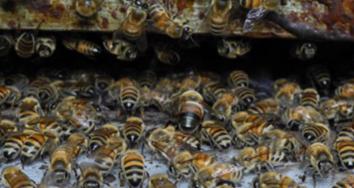Chapel of San Rocco
18th - 19th century
The chapel stands in the area of the old 1786 Capronno graveyard, replaced by the present one in 1858. It was perhaps originally a cemetery chapel dedicated to plague victims or to San Rocco, protector against pestilences. Inside there is a modern painting of the Crucifixion with Mary and St Rocco recognizable by his typical iconography: there is a sore on the saint’s leg and nearby is the dog that saved him from dying of hunger by bringing him a piece of bread every day.
The legend of the Angera relics of the plague sufferers’ saint
After his future parents, wealthy and devoted, had prayed at length, a child – Roch – was born in Montpellier with a red birthmark in the shape of a cross on his chest. After their deaths when he was about 20 years old, he decided to put himself at the service of Christ following the example of Francis of Assisi; he gave all his goods to the poor and left on pilgrimage to Rome. During the voyage he gave miraculous assistance to unfortunates with the plague in various part of Italy, especially where the epidemic was most acute. When he himself was stricken with the plague he sheltered in a wood so as not to infect anyone else. Here a dog found him at death’s door in a cave; the faithful friend saved his life by bringing him a piece of bread each day, and God healed him so that he could continue to help those suffering from the plague. He carried on his way and continued to help the sick, but later in his life fell victim to the political intrigues of the time; he was imprisoned and died after five years in jail. According to a curious legend the saint was imprisoned in and later died in the Rocca di Angera, and his relics were later sold by the Angerans to the Venetians. However, this version is unfounded: Rocco was incarcerated in Voghera and died there on August 16th of a year between 1376 and 1379. Protector and comforter of all plague sufferers who invoked his name, in 1414 he was proclaimed a saint. From that moment begins the remarkable story of his relics; his bones ended up in various parts of Italy and Europe. According to one version, the body was transported amid a thousand mishaps by a monk named Mauro to the castle of Count Pietro dal Verme. According to others, this friar – a very bad person – bought it with the agreement of the provost of Voghera. The saint's body arrived in Venice in 1485, destined for the Scuola Grande di San Rocco, but to facilitate its transport the friar had broken the bones and some pieces had been sold along the way. In 1595 an arm was also transferred to the Church of Rome and later a shinbone was sent to that of Montpellier; over the years, small pieces of San Rocco were sent to – or turned up in – numerous places throughout Italy. We do not know exactly how or when the legend that tied San Rocco’s death and relics to Angera was born; perhaps it can be attributed to a tradition that often links healing and miracle-working saints to important areas they passed through.
In Angera no churches were dedicated to the saint and his relics were not venerated, but the plague’s diffuse presence in the past meant that there are no towns in Lombardy that do not have at least one chapel, painting, statue or district named after San Rocco during some epidemic.
In the Angera Chapter Diary list of religious occasions, August 16th is recorded as a town festival, but it does not appear to have been celebrated, except in special cases or at the request of devotees.
In 1730, on the occasion of transport of relics of the Holy Cross, the feast begun on August 16th was continued during St Rocco’s Day.
On the left of the chapel there is an enclosed area around a broken column with an inscription on its base. This is not a war memorial – in fact Capronno lost none of its inhabitants during either world war. Local tradition has it that the salvation of Capronno’s young soldiers was due to the prayers and good auspices of Don Stefano de Servi, coadjutor of the church of Santa Maria Maddalena, who used to bless the departing military, praying for their return, even after great suffering.
This is a funerary monument put up in memory of Renato Borromeo, then owner of Capronno’s land and buildings. Renato, who probably did not spend much time here, died in Milan and was buried there in the Monumental Cemetery. The local people wished to commemorate him with this small mausoleum, as indicated by the (now not easily legible) inscription:
IN ˑ MEMORIA ˑ DEL ˑ CONTE ˑ RENATO ˑ BORROMEO ˑ MORTO ˑ 29 GENNAIO ˑ 1875

